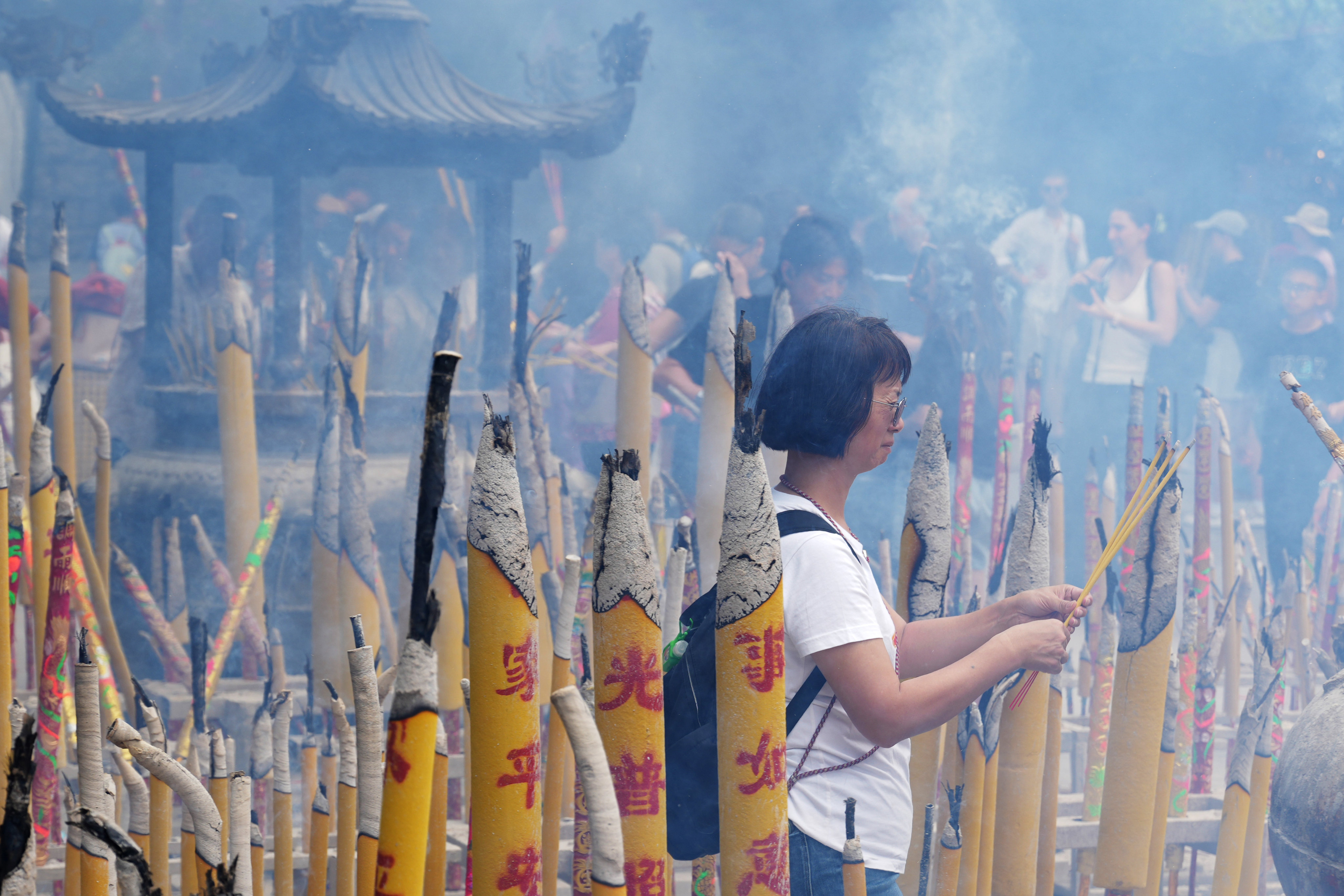Copyright scmp

Hong Kong incense master Aaron Tang Ho-chuen scoops up chunks of agarwood and breathes in their rich, smoky scent. “Agarwood creates a sense of calm, making it perfect for peaceful activities like meditation and yoga,” says Tang, the founder of the Hong Kong Incense Company, which makes incense with natural ingredients using traditional recipes. Agarwood – a dark, infection-fighting resin created when incense trees, or Aquilaria sinensis, are cut or damaged – is highly sought-after for its use in traditional medicine, religious ceremonies, incense and perfumery. Sometimes called “black gold”, it is one of the world’s most expensive natural resources, with high-grade agarwood fetching as much as HK$200,000 (US$25,700) per kilogram. But there is a dark side to the agarwood trade: its high value has created a multibillion-dollar illegal market that fuels the poaching of wild trees, pushing many species towards extinction. Illegal harvesting goes against the spirit of traditional incense, says Tang, who ethically sources his agarwood from China and India. Sustainability is a vital element of the incense industry, and Tang wants to educate people about Hong Kong’s rich incense heritage, which took root when incense trees were planted in ancient villages during the Song and Ming dynasties. It is a noble mission, given the city’s strong connection to incense: the literal translation of Hong Kong from Cantonese, “fragrant harbour”, comes from the once-flourishing agarwood trade. “Not many people know that Hong Kong’s name has roots in the incense trade and that, from the 1940s to 1970s, the city was the main incense production hub,” Tang says. By the late 20th century, as manufacturing costs soared and younger people shunned low-paying, labour-intensive work, Hong Kong’s incense factories relocated to mainland China. Today, the city’s focus is on conserving the endangered incense tree, which is threatened by poaching and illegal logging. Native to Hong Kong and South China, the species is listed as “vulnerable” by the International Union for Conservation of Nature (IUCN), a global environmental network that focuses on the sustainable use of natural resources. According to Cites – the Convention on International Trade in Endangered Species of Wild Fauna and Flora – anyone who imports an endangered species into Hong Kong without a licence faces a fine of up to HK$10 million and 10 years' imprisonment. Agarwood protection efforts also exist on a local level. The felling of incense trees on government land in Hong Kong without permission carries a maximum fine of HK$25,000 and one year in prison, while the Agriculture, Fisheries and Conservation Department (AFCD) has a special task force that patrols wild tree hotspots. Still, illegal harvesting continues to feed a trade that is growing in scale. On September 25 last year, Hong Kong Customs seized one tonne of agarwood worth HK$18 million – its largest haul in history. Conservation efforts are also unfolding in laboratories around Hong Kong. In 2024, the University of Hong Kong (HKU) and the Hong Kong Police Force joined forces to dismantle illegal agarwood trafficking gangs. The use of HKU scientific data by the police led to the arrest of 13 people. As well as conservation and public awareness projects, scientific research is fundamental. In this respect, Kadoorie Farm and Botanic Garden (KFBG), a conservation and education centre, is also playing its part. It has uncovered some depressing statistics: in some areas of Hong Kong, the number of incense trees declined by more than 90 per cent between 2015 and 2020. To help combat the illegal trade, KFBG recently developed a way to use DNA analysis to identify the species and origin of agarwood samples. Authorities can use this to cross-reference seized agarwood and check if it was taken from protected trees, says Zhang Huarong, KFBG’s senior conservation scientist in the flora conservation department. “At KFBG, we developed a genetic database using samples from over 1,000 [incense] trees … collected across Hong Kong,” says Zhang, adding the resource provides critical support for both conservation efforts and law enforcement. “For instance, it enables the identification of species and the origin of seized agarwood in Hong Kong, directly aiding authorities in enforcing wildlife protection laws.” This year, KFBG released a groundbreaking study that identified critical gaps in the management of the global agarwood trade. Analysing trade data, researchers mapped supply chains and identified key players driving the trade, with Indonesia found to be the top exporter – supplying 60 per cent of global trade. Meanwhile, Vietnam, Thailand and Malaysia play critical roles as transit hubs and exporters. Markets in the Middle East, including the United Arab Emirates and Saudi Arabia, and East Asia, including China and Japan, were pinpointed as primary destinations. “Our findings underscore the need for a coordinated international response,” says Zhang, a co-author of the study that was published this year in the journal Global Ecology and Conservation. “By targeting high-impact countries and implementing stricter trade control and documentation, we can disrupt illegal networks and protect remaining wild populations.” The study also found discrepancies between Cites and customs data, revealing large volumes of unreported agarwood trade, Zhang adds. The most prominent gap was Indonesia’s exports to 10 African countries, including Sudan, Libya and Nigeria. “Customs records document multi-million-kilogram shipments of agarwood chips and powder from Indonesia to these nations, but these trades are absent from Cites databases,” he says. “While Cites and customs data align for other major trade hubs [Hong Kong, India, Singapore and Thailand], Indonesia’s unreported exports highlight failures in Cites reporting compliance, exacerbated by illegal trade and inadequate monitoring of this high-volume supply chain.” The study also called on consumers to prioritise ethically sourced products and to reject illegally harvested agarwood. Tang, too, has been pushing the “source sustainably” message. He also wants the incense industry, one deeply rooted in Hong Kong culture, to get more government support. Tang has spoken twice on the issue of agarwood conservation at the Legislative Council (Legco), and he also sent Legco members a link to the online retail platform Taobao after discovering it was selling illegally sourced agarwood from Hong Kong. He never heard back from them. A lack of action frustrates Tang, whose desire to protect and promote the city’s incense culture started after a visit in 2007 to the Chi Lin Nunnery in Diamond Hill. It was among the nunnery’s sprawling Buddhist temple complex that Tang, then 15, smelled agarwood incense for the first time. It was love at first whiff, the scent a far cry from the acrid aromas produced by cheap and mass-produced incense often made with sawdust and synthetic fragrance oils. Tang also put his passion on the page with the release this year of Hong Kong Incense Love, a book that explores the history of Hong Kong’s incense culture while documenting the oral histories and traditional incense-making techniques of century-old incense houses. “We need to preserve traditional incense culture and strive to promote it as intangible cultural heritage. We cannot let Hong Kong become a place without fragrance,” says Tang, adding that burning incense has played a vital role in Chinese culture for thousands of years. Incense is also central to religious practices in Taoism, Buddhism and ancestral worship, used not just to purify spaces but to connect with the spiritual world as well. It is believed that the smoke given off by incense carries prayers and offerings to ancestors and deities. A visit to the Hong Kong Incense Company in the industrial district of Kwai Fong is a treat for the senses. The large space is more shrine than shop, with shelves stacked with ornate golden altars, burners and boxes of incense. On a warm day in October, Tang opens one and carefully removes an incense coil made of lakawood, an aromatic heartwood used in Taoism for its perceived purifying properties. Some boxes contain incense cones made with cinnamon, sandalwood, clove and lemongrass – “a perfect natural insect repellent”, Tang says – while others hold tiny, honey-infused incense balls. Large wooden cupboards packed with incense-making “ingredients” catch the eye, from musk and myrrh to red cypress and cedar, as well as sandalwood sourced from Australia, frankincense from Africa, and agarwood from India and China. In one room is a chunky rolling machine where Tang spends two days a week making joss sticks. Once rolled, they are dried on wooden racks for about a week. “I dip one end of the bamboo stick into a natural red food dye,” Tang says. “Most mass-produced incense is made with industrial dye, but a natural one is healthier.” As well as selling handmade products, Tang hosts incense-making courses, lectures and workshops to promote knowledge of traditional incense culture and engage younger generations. “These activities go beyond simply imparting skills; they emphasise cultural significance and historical heritage, striving to preserve the unique identity and vitality of Hong Kong’s incense culture,” he says. “Traditional incense making is more than just a craft – it is a symbol of Hong Kong’s cultural spirit that must be cherished, preserved and promoted.”



